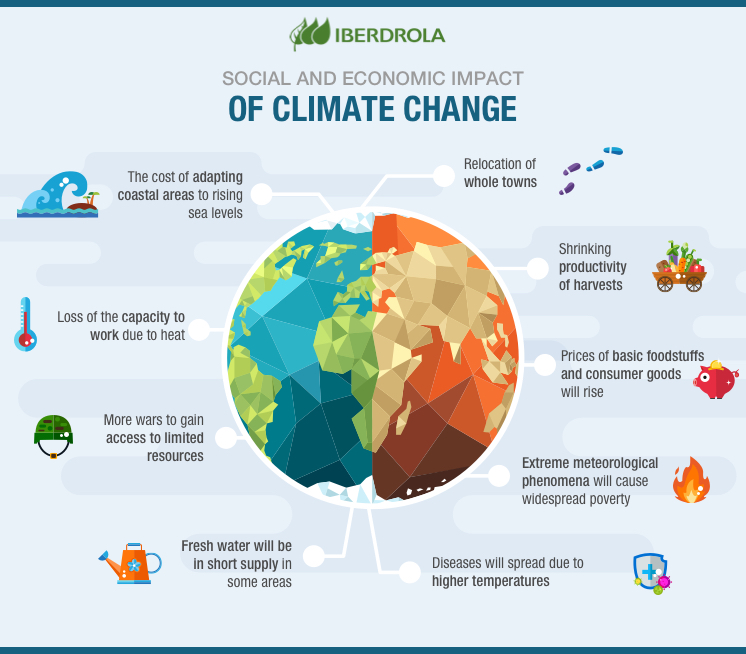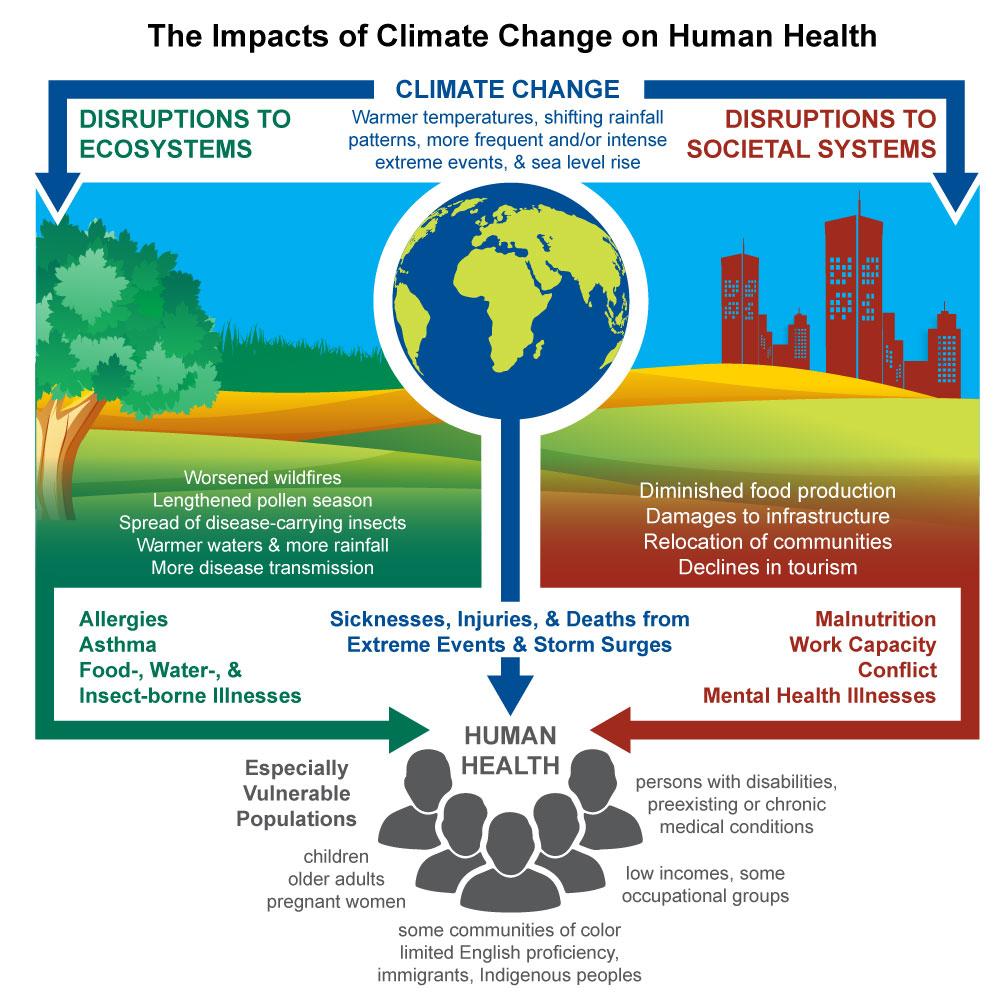Climate change has altered almost every aspect of Human Environment. With the intensity, Human has continued to intervene and mould things according to his desire and will.
A similar intensity has been adopted by Mother Nature to balance the planet in its own mystic ways. Human can only awe at such raw art, for better or worse.
Earth’s climate has without-doubt undergone radical changes in the distant as well as the recent past and is almost certain to undergo more radical changes in the not-too-distant future. That is indeed not the problem.
The problem lies in the fact that the pace of such change is so rapid with the aid of Human intervention that any specie could sparingly adapt to the changes around.
For several years, scientists have used ancient Geological records, paleontological evidences and sophisticated computer models like general circulation, atmosphere-ocean interaction, and radiative-convective process models, to understand and visualize the future of earth’s climate.

Predicted and Human-inflicted Climate change:
Most Natural causes of Climate change may be expected. For example, the 100,000 years Ice age cycles are the probable consequences to changes in the tilt of Earth’s axis and its orbital path around the sun.
These planetary factors introduce gradual but consistent changes those affect Insolation of Sun’s energy reaching different parts of the world in different seasons.
A meteor hitting the Earth or its seismicity rumbling under the plates that led to breaking up of Pangea, are some of the prominent ones.
But Human brought Climate Change impacts are visible now, more than ever. Unchecked burning of Fossil-fuels through vehicles and Industries, unquestioned Deforestation, diminishing biodiversity, great stress on Agricultural productivity and hence clearing of Forests, even the Hot Spots etc is a cause of concern.
Carbon, Methane, CFCs, HCFCs etc are strangling our Atmosphere, thereby destroying even the life-systems of our planet i.e., Tropical Forests.
Average temperatures around the world have risen since about 1880, when scientists began tracking them.
In whichever Ecosystem one resides, we may be able to witness the worst impacts of Climate change. Gone are the days where one could negate it to be an urgency, Climate change is already an emergency.
Here is a list of 10 signs those shall not be ignored any further:
When approximately 12% of land is somehow under Human protection, a mere less than 1% of World Oceans only receive protection.
- Increased Ocean Warmth– destroys coral reefs, threatens delicate marine ecosystems, and disrupts global fisheries reducing their productivity.
2. Increased Air Temperature over Oceans- can lead to increased evaporation and consequently more water vapor in the air. This further causes extra warming, inoculating Higher Precipitation events and acting as fuel for potential hurricanes in the region destroying lives and livelihoods.
3. Increased Surface water Temperatures– Between 1901-2015, sea surface temperatures rose at an average rate of 0.13°F per decade, and they still continue to rise.
All this triggers a bigger problem to deal with: Rising Sea Levels across the globe- at a staggering rate of 0.04 to 0.1 inches per year since 1900. As per NASA’s suggestions, it is even 0.13 in/year, suggesting a rise.
A Sea level rise can infringe upon the freshwater ecosystem services such as natural water filtration and sustenance of human coastal infrastructures.
4. Have we noticed that Humidity is increasing and then there are scorching dry heat spells all of a sudden? Weather stations have recorded higher levels of water vapor in the air and since water vapor is a greenhouse gas, the increase in humidity causes additional warming. Even dust storms, heat waves have become increasingly common.
5. Lower Atmosphere Temperature spilling– With increased diffusion of emissions from burning coal, oil, and natural gas by human activities in the lower strata of Earth’s Atmosphere, its temperature is rising too. Our planes emit a lot of Heat and pollution directly into the lap of Troposphere.
6. Temperature over lands– with Oceans affected by anthropogenic impacts, our immediate lands will surely bear the brunt. Even the high mountains of Himalayan range could see temperatures more than 5.4° F higher by the end of the century as the Tibetan Plateau and much of the North-west Himalayas, including the Karakoram—are even more sensitive to Global warming.
7. Melting glaciers: Water changes and disasters compound- Iceberg and glacial melts in polar regions as well as in other Mountains like Doomsday Glacier/Thwaites Glacier of Antarctica or in the Arctic. Decreasing Ice cover with an average decrease of 3.2% per decade, is blowing our Climate Experts off their minds.
8. A wilder weather- The timelines for different seasons have altered. There is unexplained onset and withdrawal of various weather events like changing seasons, unexpected rainfall or heat waves like in France, even early melting of snow in the Sierra Nevada that suggests Earth’s changing moods.
9. Increasing Intensity of Natural Disasters- Cyclones, droughts, floods continue to strike Human civilization and its trikes harder now. Even their occurrence is so frequent that it astounds us.
Researchers suggest Unplanned urban development and destruction of mangrove forests as bigger reasons. Cyclones like Fani, Amphan, Nisarga could swipe off entire systems on its way.
10. Growing Pandemics with resistant tendencies– As the planet heats up, the hosts habituating within Humans or other organisms are pushed hard to survive and further cause these pathogens to look for new hosts upon reduced sustainability.
The recent Ebola epidemic in West Africa probably occurred in part because bats, which carried the disease, had been forced to move into new habitats because the forests they used to live in had been cut down to grow palm oil trees.
Speculations are still soaring for Corona that stalled lives and Economies. Other pandemics with underlying reasons include Marburg viruses in Africa, severe acute respiratory syndrome (SARS) Coronavirus and Nipah virus in east Asia.
These impacts threaten our health by affecting the food we eat, the water we drink, the air we breathe, the weather we experience and consequently, the life we endure to live.
Reducing the threats caused by climate change is an immense challenge in itself. Scientists, Legislators, policy formulators, developers, engineers, and many awakened citizens may try to offer significant tangible solutions. Technology serves the means for assessment and implementation of sustainable programs that can surely affect us in near as well as far future.
Climate change is a global concern as its inherent impacts link all geographies directly, a catastrophe in one part of the Earth will surely render thunder in the other, making it enough compelling to act now, strike hard in full capacity to save a planet that yearns for closure.



